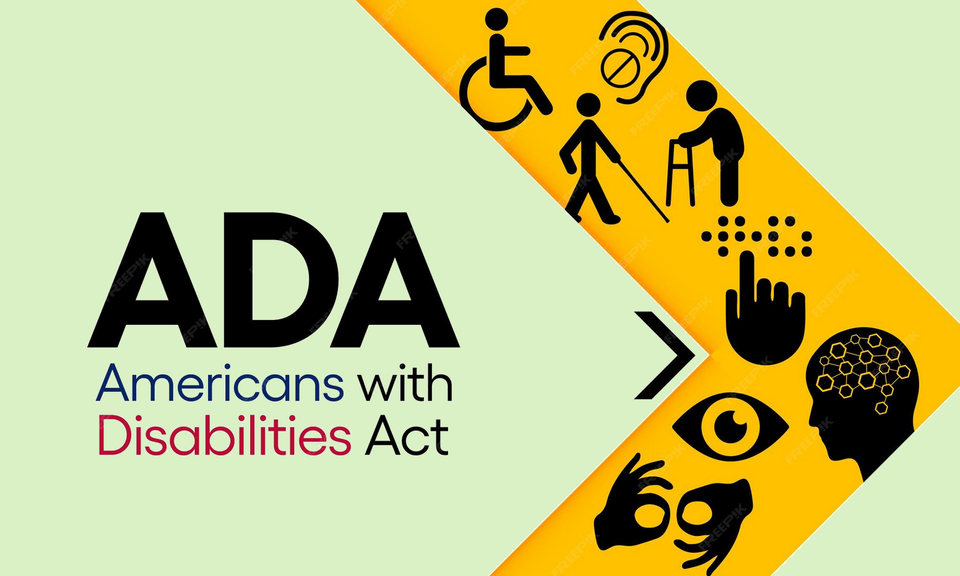ADA Compliance and SEO: How Accessibility Fuels Your Search Rankings
In the fast-moving world of digital marketing, website owners often split their focus into neat boxes. One box for SEO. Another for design. Another for accessibility. But here is the truth — those boxes are connected, and sometimes they are the same box.

In the fast-moving world of digital marketing, website owners often split their focus into neat boxes. One box for SEO. Another for design. Another for accessibility. But here is the truth — those boxes are connected, and sometimes they are the same box.
ADA compliance and SEO are not two separate tracks that occasionally cross paths. They share the same road. The changes that make a website more accessible for people with disabilities often make it more understandable for search engines. That means when you invest in accessibility, you are also investing in visibility.
If you skip ADA compliance, you are not only excluding millions of potential users, you may also be quietly sabotaging your search rankings.
Understanding the Link Between ADA Compliance and SEO
ADA compliance, in the context of websites, is about ensuring that your content is accessible to people with disabilities. This includes meeting the principles outlined in the Web Content Accessibility Guidelines (WCAG). Those principles touch everything from color contrast and keyboard navigation to screen reader compatibility and, yes, the text descriptions you add to images.
SEO, or search engine optimization, is about making sure your site is understood, valued, and ranked by search engines. It involves technical tuning, content optimization, mobile responsiveness, and improving user experience.
The overlap is obvious once you look closer. Accessibility and SEO share the same foundation: clear, structured, and meaningful content that can be interpreted easily, whether by a human using a screen reader or by Google’s crawler.
Why Accessibility Improvements Boost Search Rankings
Search engines work by crawling websites and interpreting the content they find. When a site is poorly structured, missing text alternatives for media, or dependent on inaccessible navigation menus, crawlers have less to work with.
For example:
- If your images lack descriptive alt text, you miss out on ranking in image searches.
- If your headings are out of order, crawlers may struggle to understand your content hierarchy.
- If interactive features cannot be reached without a mouse, users leave and Google notices.
On the flip side, when your website is structured for accessibility, you are providing clear signals that both assistive technologies and search engines can read. The result? Better indexing, higher rankings, and more satisfied visitors.
Four Common Accessibility Issues That Can Harm SEO
- Missing or Weak Alt Text
Without alt text, your images become invisible to screen readers and search engines alike. This not only excludes visually impaired users but also removes a valuable SEO signal. - Heading Chaos
Headings should follow a logical structure (H1, H2, H3) to reflect how your content is organized. Skipping levels or misusing headings confuses both users and crawlers. - Inaccessible Menus and Links
If someone cannot navigate your site using a keyboard, that means search crawlers may also struggle to access certain pages. - Generic Link Text
Links labeled “click here” or “learn more” lack context. Descriptive links not only help users but also add keyword-rich anchor text for SEO.
The Business Risks of Ignoring ADA Compliance
Failing to meet accessibility standards is not just a usability problem, it is a legal and business risk. In the United States, businesses have faced lawsuits and settlement costs for having inaccessible websites.
Even without legal trouble, an inaccessible site can quietly drain your digital performance. Higher bounce rates, shorter session durations, and fewer completed conversions all send negative signals to search engines. Over time, your rankings slip, your organic traffic drops, and your competitors move ahead.
Google’s Perspective on Accessibility
Google has never said “ADA compliance” is a direct ranking factor, but its algorithms reward the very elements that accessibility improves.
Clean HTML. Mobile usability. Page speed. Logical structure. These are all baked into accessibility best practices. Core Web Vitals, Google’s measurements for loading speed, interactivity, and visual stability, directly impact all users but especially those relying on assistive tech.
In other words, accessibility improvements align perfectly with what Google already wants from a high-quality website.
A Real-World Example of Lost Opportunities
Picture an online furniture store with hundreds of product photos. None of those images have alt text. A customer using a screen reader cannot tell if a “blue modern sofa” is different from a “navy sectional couch.” The store loses that sale.
At the same time, Google has no descriptive information to index for those images. The store misses ranking opportunities for high-intent searches like “modern blue sofa for small spaces.” Multiply that across hundreds of products, and the impact on revenue becomes enormous.
How to Audit Your Site for ADA and SEO Overlap
Start by checking your site for accessibility and SEO gaps at the same time. Here is a combined checklist:
- Run Automated Scans with tools like WAVE, Axe, or Google Lighthouse to identify missing alt text, heading issues, and poor contrast.
- Test with a Screen Reader like NVDA or VoiceOver to experience your site as a visually impaired user would.
- Review Navigation to ensure all links, menus, and forms can be accessed without a mouse.
- Check Mobile Responsiveness since poor mobile layouts can break accessibility and hurt rankings.
These steps catch many of the same problems that hurt both accessibility and SEO in one sweep.
Practical Fixes That Deliver Double Benefits
- Write Descriptive Alt Text that conveys the purpose of each image and includes relevant keywords naturally.
- Organize Headings Logically to guide both users and crawlers through your content.
- Ensure Keyboard Access to all interactive features.
- Improve Color Contrast for legibility, especially on mobile.
- Label Forms Clearly so they are usable with assistive tech and indexed accurately.
- Use Descriptive Links to add clarity and keyword value.
These fixes not only make your site more welcoming to all users but also strengthen your overall SEO profile.
The Long-Term Payoff of Merging ADA Compliance with SEO
When accessibility is built into your SEO strategy from the start, you create a website that is inclusive, discoverable, and future-proof. You also build trust, something search algorithms cannot measure directly, but users can feel instantly.
Over time, your site benefits from:
- Higher engagement and longer sessions
- More organic traffic from both text and image search
- Reduced risk of legal issues
- A stronger, more positive brand reputation
This is not just compliance. It is good business.
A Small Step You Can Take Today
If writing alt text for hundreds or thousands of images feels overwhelming, tools like AltTextify can help generate clear, accurate descriptions in seconds. That means you can start improving accessibility and SEO today without adding weeks of manual work.
Your audience and your search rankings will thank you.




